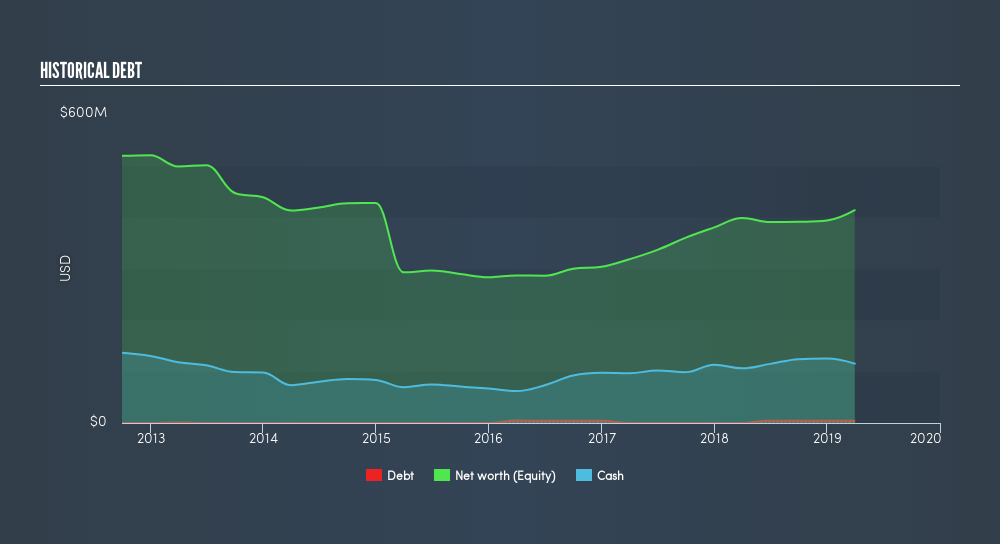
Want to participate in a short research study? Help shape the future of investing tools and you could win a $250 gift card!
Warren Buffett famously said, 'Volatility is far from synonymous with risk.' It's only natural to consider a company's balance sheet when you examine how risky it is, since debt is often involved when a business collapses. We can see that Silvercorp Metals Inc. (TSE:SVM) does use debt in its business. But should shareholders be worried about its use of debt?
Why Does Debt Bring Risk?
Debt and other liabilities become risky for a business when it cannot easily fulfill those obligations, either with free cash flow or by raising capital at an attractive price. Ultimately, if the company can't fulfill its legal obligations to repay debt, shareholders could walk away with nothing. However, a more usual (but still expensive) situation is where a company must dilute shareholders at a cheap share price simply to get debt under control. Of course, plenty of companies use debt to fund growth, without any negative consequences. The first thing to do when considering how much debt a business uses is to look at its cash and debt together.
See our latest analysis for Silvercorp Metals
What Is Silvercorp Metals's Net Debt?
As you can see below, at the end of March 2019, Silvercorp Metals had US$4.48m of debt, up from none a year ago. Click the image for more detail. But it also has US$115.3m in cash to offset that, meaning it has US$110.8m net cash.

A Look At Silvercorp Metals's Liabilities
Zooming in on the latest balance sheet data, we can see that Silvercorp Metals had liabilities of US$37.9m due within 12 months and liabilities of US$48.0m due beyond that. Offsetting these obligations, it had cash of US$115.3m as well as receivables valued at US$4.79m due within 12 months. So it actually has US$34.2m more liquid assets than total liabilities.
This short term liquidity is a sign that Silvercorp Metals could probably pay off its debt with ease, as its balance sheet is far from stretched. Silvercorp Metals boasts net cash, so it's fair to say it does not have a heavy debt load!
Silvercorp Metals's EBIT was pretty flat over the last year, but that shouldn't be an issue given the it doesn't have a lot of debt. There's no doubt that we learn most about debt from the balance sheet. But ultimately the future profitability of the business will decide if Silvercorp Metals can strengthen its balance sheet over time. So if you're focused on the future you can check out this free report showing analyst profit forecasts.
Finally, a business needs free cash flow to pay off debt; accounting profits just don't cut it. Silvercorp Metals may have net cash on the balance sheet, but it is still interesting to look at how well the business converts its earnings before interest and tax (EBIT) to free cash flow, because that will influence both its need for, and its capacity to manage debt. Over the most recent three years, Silvercorp Metals recorded free cash flow worth 57% of its EBIT, which is around normal, given free cash flow excludes interest and tax. This cold hard cash means it can reduce its debt when it wants to.
Summing up
While it is always sensible to investigate a company's debt, in this case Silvercorp Metals has US$111m in net cash and a decent-looking balance sheet. So we don't think Silvercorp Metals's use of debt is risky. Of course, we wouldn't say no to the extra confidence that we'd gain if we knew that Silvercorp Metals insiders have been buying shares: if you're on the same wavelength, you can find out if insiders are buying by clicking this link.
At the end of the day, it's often better to focus on companies that are free from net debt. You can access our special list of such companies (all with a track record of profit growth). It's free.
We aim to bring you long-term focused research analysis driven by fundamental data. Note that our analysis may not factor in the latest price-sensitive company announcements or qualitative material.
If you spot an error that warrants correction, please contact the editor at editorial-team@simplywallst.com. This article by Simply Wall St is general in nature. It does not constitute a recommendation to buy or sell any stock, and does not take account of your objectives, or your financial situation. Simply Wall St has no position in the stocks mentioned. Thank you for reading.
About TSX:SVM
Silvercorp Metals
Acquires, explores, develops, and mines mineral properties in China.
High growth potential with solid track record.
Similar Companies
Market Insights
Community Narratives


